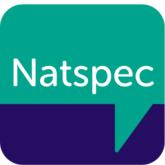This article is written by Neil Harrod-Beck, Assistive Technology Projects Lead with TechAbility.
Take fifty-six professionals from different specialist colleges and Karten centres with different job roles, different experiences and entirely different contexts, ask them to take ownership for Assistive Technology and what do you get?
Well call me thoroughly biased, but I think something rather exciting.
Tasked with improving the standards of technology in these organisations, TechAbility initially focused on depth – wide ranging consultations taking details from discussions, observations and paperwork to produce bespoke reports with recommendations. These were complemented with webinars, a yearly conference and a set of standards.
However, this could leave colleges and centres, with ever changing situations and staff, the task to reinvent the metaphorical assistive technology wheel. We were on hand to help where we could, but often it would be difficult for these organisations to know when to ask for help, or to “know what they didn’t know.” Where there was success, we weren’t always there to witness, celebrate and share the best practice. What we needed was a community of practice.
Community of Practice
A community of practice is a group of individuals who collaborate and learn together to deepen their knowledge and expertise in a specific domain, fostering mutual support and continuous learning among its members. It provides a platform for sharing ideas, experiences, and resources, promoting professional growth and a sense of belonging.

Introduction to communities of practice, Wenger and Beverly Wenger-Trayner, (June 2015)
So how do you go about building a community? What were the ingredients for this community of practice?
The ingredients
Regular meetings
The first meeting involved ten Champions attending. The structure was just forty-five minutes to recognise the challenge to make time in busy schedules, but also to keep the meetings exciting and fast paced. This also gave us fifteen minutes of extra time for people to stay on and talk about individual issues – an unofficial surgery.
It was split into three blocks of 15 minutes – shared between TechAbility delivery of content, a guest speaker and importantly some time to hear from the Champions and what they wanted to talk about. This format worked very well for the first year or more, but one of the challenges of success has been the growth in number of champions.
As numbers grew there was a danger that the Champions were not getting sufficient time to interact so in May 2023 a senior champion was appointed to assist running the session with a split cohort. This helped to keep the numbers low to improve connection and to differentiate the newer champions from the more established members of the group.
The feedback from the sessions has been resoundingly positive. Champions have described feeling more connected and, in some cases, it has helped facilitate new roles and supported IT/AT strategies. As time goes by, we can leave more questions to be answered by the Champions and there is regular connection with them and their colleges outside of sessions.
Online shared area
Champions have a shared area on Microsoft Teams. There are spaces for Champions to introduce themselves, share technology and for meetings slides and resources. This was decided based on an outline of what the Champions requested during one of the meetings.
A project area on the Microsoft Teams space is being developed for the Champions, to enable focus on everything from accessible gaming leagues to a “swap shop” for surplus or wanted technology.
Connecting the technology with the technologists

Each meeting a different guest is invited to talk to the Champions. We have had great support from the wider AT community to create direct links to software/hardware suppliers, academics and even policy influencers.
Bringing it together
Referring back to the Community of Practice model, the Domain of Assistive Technology and improving the lives of those with disabilities was a great fit for the Community of those working with Assistive Technology that is specialist colleges and Karten Centres. The Practice has been shared through group meetings, external events and, increasingly, directly from the champions with each other.
The future of the champions
As pedagogy, technology and our knowledge of supporting people improves and changes we need to make sure that we are working smarter, not harder. The opportunities as a sector to raise the standards of our delivery and support can’t be ignored.
“Change is the law of life. And those who look only to the past or present are certain to miss the future.” – John F. Kennedy, 1963
A Champion in years to come will be able to access the cumulative knowledge that their peers have collated – through the shared area, in organised meetings or working together on projects. When a valued member of college moves on and takes their skills/experience with them the Champions will be on hand to help induct a new member. When a project calls for an engaged, organised and highly skilled collection of Assistive Technology practitioners directly working with students, they will be there.
We have the next generation of Assistive Technologists among us, and they have some exciting challenges ahead.
You can find out more about the TechAbility champions on the TechAbility website. If your member college or Karten Centre doesn’t yet have a TechAbility champion, get in touch with TechAbility@natspec.org.uk to find out how to get involved. We are investigating ways of developing the Champions programme to support organisations who are not Natspec or Karten members. If you feel this could support your organisation please express an interest at TechAbility@natspec.org.uk

